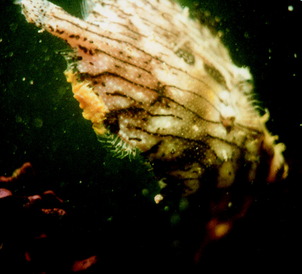Chapter 13 Tropical marine fish
Over 90% of tropical marine fish are wild-caught. This means that, although they are robust as individuals (they are the Darwinian survivors of the rigours of planktonic survival), the stress of capture, transportation plus the mingling of species from different continents and biotopes at the wholesaler and retailer, mean that disease outbreaks are not uncommon. Some captive breeding does occur, principally with those species with either short or no planktonic larval stage, e.g. clownfish (Amphiprion spp), seahorses (Hippocampus spp) and Banggai cardinals (Pterapogon kauderni).
Recommended water-quality parameters are listed in Table 13.1.
Table 13.1 Recommended water quality parameters: Fish-only community aquarium; reef aquarium
| Parameter | Fish-only community aquarium | Reef aquarium (with photosynthetic invertebrates) |
|---|---|---|
| Temperature (°C) | 22–26 | 24–28 |
| pH | 8.0–8.3 | 8.0–8.4 |
| Salinity (measured as specific gravity) | 1.020–1.027 | 1.022–1.027 |
| Carbonate hardness (KH) (mg CaCO3) | 116 | 116–267 |
| Ammonia (total) (mg/L) | <0.02 | <0.02 mg/L but the high pH requires ammonia should be 0.0 mg/L |
| Nitrite (mg/L) | <0.02 | <0.02 |
| Nitrate (mg/L) | <40 mg above ambient tapwater levels | <5–10 |
| Calcium (mg/L) | 300–500 | 300–500 |
| Oxygen (mg/L) | 5.0–8.0 | 5.0–8.0 |
| Phosphate (mg/L) | <0.2 | <0.036 |
| Water volume turnover | Dependant upon fish housed in aquarium | 15–20 times per hour |
| Lighting | Dependant upon fish housed in aquarium | 10–14 h daylight; 0.6–5.5 Watts/L |
Nursing care
The same principles apply as for goldfish and koi but differ significantly in some areas. Salt water holds less oxygen than fresh water at an equivalent temperature, so stocking densities are more critical. The high pH of marine aquaria means that excreted ammonia is more toxic. Lowering the salinity to a specific gravity of 1.020 is often beneficial – it reduces osmotic stress on the fish and is less well tolerated by many ectoparasites. Protein skimming is an important method of removing proteinaceous and other dissolved and suspended materials from salt water. However, zeolite is ineffective in salt water.
Proprietary products containing copper are commonly available medications for marine fish. Copper is toxic to certain groups of fish including the elasmobranchs (sharks and rays) and many invertebrate species. It may also interfere with the normal gut flora of herbivorous fish such as tangs and surgeonfish. Signs of toxicity include stress colouration, loss of appetite, excessive mucous production and respiratory distress. Copper levels, therefore, require daily monitoring with a copper test kit (Table 13.2). Never use copper-based treatments in aquaria containing invertebrates, and ideally always use a separate dedicated treatment aquarium.
Table 13.2 Therapeutic use of copper
| Free copper ion concentration | Result |
|---|---|
| 0.2 p.p.m. | Therapeutic |
| <0.15 p.p.m. | Non-therapeutic |
| >0.25 p.p.m. | Toxic |
Analgesia and anaesthesia
See Chapter. 11, Goldfish and Koi.
Species commonly presented to the veterinarian include those listed in Table 13.3.
Table 13.3 Species of tropical marine fish commonly encountered: Key facts
| Species | Notes | Common disorders |
|---|---|---|
| Clownfish (Amphiprion spp) | Most species available are captive bred. Host anemone not often required in captivity | Ectoparasites especially Crytocaryon, Brooklynella, Uronema and amyloodinium |
| Angelfish (Pomacanthus, Holacanthus and Centropyge spp) | Natural diet high in algae and sponges | Cryptocaryon, skin flukes, head and lateral line disease. Variably susceptible to poor water quality |
| Lionfish (Pterois spp and Dendrochirus spp) | Venomous dorsal spines | Hepatic lipidosis |
| Hippocampus spp | Live-bearers; commercially bred for both the ornamental fish-trade and traditional Chinese medicine | Ectoparasites, brood pouch emphysema |
Skin disorders
Structure and function of skin (see Ch.11, Goldfish and Koi).
Pruritus
Erosions and ulceration including fin rot
Nodules and non-healing wounds
Changes in pigmentation
Investigations
Treatment/specific therapy
Respiratory tract disorders




